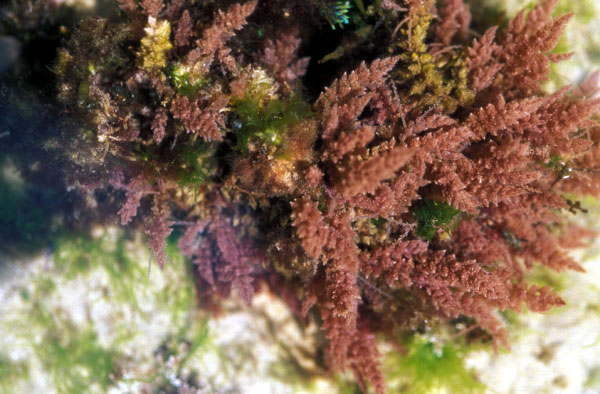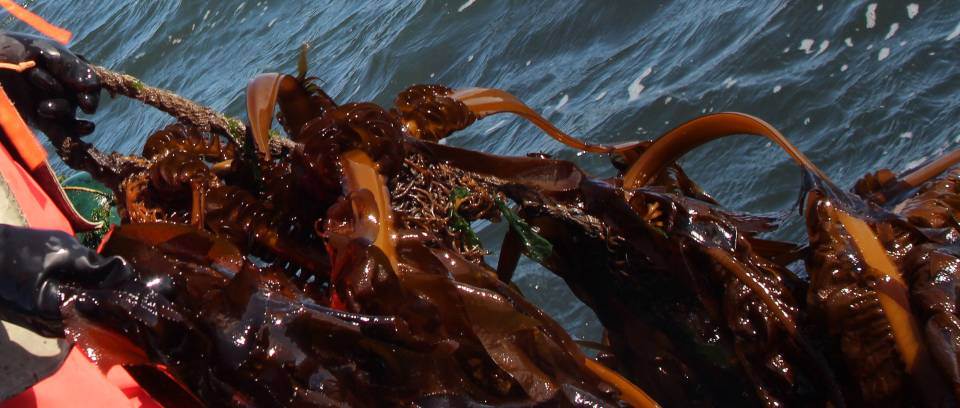The EU Bioeconomy Strategy aims to support the sustainable growth and development of the EU bio-based sectors while creating jobs, innovation and services. Despite the recognized potential of the algae biomass value chain, significant knowledge gaps still exist regarding the dimension, capability, organization and structure of the algae production in Europe. This study presents and analyses the results of a comprehensive mapping and detailed characterization of the algae production at the European scale, encompassing macroalgae, microalgae, and the cyanobacteria Spirulina. This work mapped 447 algae and Spirulina production units spread between 23 countries, which represents an important addition to the reported number of algae producing countries. More than 50% of these companies produce microalgae and/or Spirulina. Macroalgae production is still depending on harvesting from wild stocks (68% of the macroalgae producing units) but macroalgae aquaculture (land-based and at sea) is developing in several countries in Europe currently representing 32% of the macroalgae production units. France, Ireland, and Spain are the top 3 countries in number of macroalgae production units while Germany, Spain, and Italy stand for the top 3 for microalgae. Spirulina producers are predominantly located in France, Italy, Germany, and Spain. Algae and Spirulina biomass is directed primarily for food and food-related applications including the extraction of high-value products for food supplements and nutraceuticals. Algae production in Europe remains limited by a series of technological, regulatory and market-related barriers. Yet, the results of this study emphasize that the European algae sector has a considerable potential for sustainable development as long as the acknowledged economic, social and environmental challenges are addressed.
Digital library
-
Current Status of the Algae Production Industry in Europe: An Emerging Sector of the Blue Bioeconomy
-
Even with seaweed aquaculture growing rapidly over the last decade, global demand for seaweed-based products has surpassed supply. There is a large and diverse array of applications and uses of macroalgal products. The seaweed industry is estimated to have an annual value of some US$6 billion, the largest share of which (US$5 billion) is human food products. The remaining US$1 billion is largely based on seaweed extracts, such as hydrocolloids for use in animal feeds, fertilizers and bioactives.
-
Growth of seaweeds in the vicinity of fish farm cages in northwest Scotland was investigated as a means of extracting, from the surrounding water, nutrients added via fish feed and excretory products. Enhanced growth and yields of Palmaria palmata and Saccharina latissima cultures were found when grown adjacent to fish farm cages. Growth rates in summer for P. palmata and S. latissima were enhanced by up to 48% and 61%, respectively, and biomass yields over a growth season were enhanced by 63% and 27%, respectively. The nitrogen content of the macroalgae grown close to the fish cages was greater than for those grown at reference sites away from the cages. Extrapolation show that under optimal conditions, a hectare of P. palmata could yield up to 180 tonnes wet weight per annum and a hectare of S. latissima 220 tonnes wet weight per annum. Conservative estimates of yields show that P. palmata could be expected to remove up to 12% and S. latissima 5% of the waste nitrogen released during the growth of 500 tonnes of salmon in the sea over 2 years. The practicalities and logistics of culturing macroalgae near fish cages are considered and, because of the wide distribution of nitrogen emanating from fish culture and the need to optimise growth conditions for cultured macroalgae, it is recommended that macroalgal culture for bioremediation should be considered at wider geographical scales i.e., bay wide at least. (C) 2012 Elsevier B.V. All rights reserved.
-
Sea cucumbers are a valuable fishery around the globe. The United Nations Food and Agriculture Organization (FAO) estimated the global production from both aquaculture and capture fisheries to be 153,183 metric tonnes in 2011 (FAO 2013a). Of that production, roughly 85% is the Japanese sea cucumber Apostichopus japonicus (1). Sea cucumbers are developed into a variety of products including dried muscle, fermented guts, and dried gonads (FAO 2013b). Wild stocks have been heavily fished in many areas around the world. As a result of overfishing, sea cucumber culture techniques have been developed for variety of species. Hatchery production has centered in the Pacific Rim and is used both as a source of juveniles for various culture activities and for stock enhancement and restoration efforts. Currently hatchery production exists for approximately a dozen different tropical and temperate species (Purcell et al. 2012, Table 1).
Integrated Multi-trophic Aquaculture (IMTA) efforts in northeastern North America have focused on various combinations of fish, shellfish, and algae. Sea cucumbers have been proposed as one potential species that could be added as a consumer of benthic deposits. Within the Gulf of Maine, the predominate sea cucumber species, Cucumaria frondosa (2), has been fished commercially in Maine since 1990. Landings peaked in 2004 with a harvest of just over 10 million pounds (ME DMR 2013). The value of the fishery in Maine fluctuated between $66,000 and $562,000 from 1994 until the peak in 2004. The price per pound has more than tripled since the peak harvest in 2004. The economic value for the Maine fishery is based on the boat price paid to fishermen, and does not represent the significant increase in value that occurs with processing into various final consumer products.
Sea cucumbers from the Maine fishery traditionally have gone to the Asian food market, however the potential for various nutraceuticals may represent a higher value use. For example, trials are underway to examine the potential for Frondoside A, a compound extracted from C. frondosa, to treat cancer (Attoub et al. 2013). At least one company in the region is processing sea cucumbers for the extraction of various nutraceuticals.
A recent review of the potential for culture of C. frondosa in the Northeast (Nelson et al. 2012a) highlighted advantages and challenges for commercial culture of this species, in particular under IMTA. Strengths include an existing market for the product with good potential for increased nutraceutical use, a well-understood reproductive biology (especially for populations in the St. Laurence River area), and evidence that C. frondosa would be a suitable species for integration in IMTA farms as a benthic filter feeder. Culture of this species faces several challenges. These include a relatively low market price, even when the fishery was at its peak, due to the thinner muscle wall, a long grow-out period, and a lack of published techniques for culturing this species.
-
Sargassum (Family Sargassaceae, Order Fucales) represents the most common species of brown macroalgae in tropical to warm temperate waters (Guiry and Guiry 2013). It is the most diverse genus of marine macrophytes with more than 130 described species (Xie et al. 2013), with 28 species in Korea (Hwang et al. 2006). Sargassum species, collectively referred to in this document as sargassum, include a wide variety of forms and reproductive strategies (Mattio and Payri 2011) that provide important ecological and economical benefits including nutrient cycling (Wanders 1976, Carpenter and Cox 1974). Intertidal and subtidal sargassum beds provide food, habitat, and nursery grounds for a wide array of marine organisms (Tsukidate 1992), while also providing food, alginates, feed, and bioactive compounds for people who harvest or culture sargassum (Belleme and Belleme 2007, Zhao et al. 2008, Xie et al. 2013)(1).
-
In an effort to develop suitable culture techniques for macroalgae in the Northeast, this guide reviews the current knowledge of Sargassum biology and reports on culture techniques learned during a research exchange between the United States (NOAA Sea Grant) and South Korea (National Fisheries Research and Development Institute). The authors would like to acknowledge Drs. Miseon Park, Young Dae Kim, and Eun Kyung Hwang from the National Fisheries Research and Development Institute. Supported by Sea Grant and NOAA-MOF Joint Project Agreement on Integrated Multi-Trophic Aquaculture, through the Joint Coordination Panel for Aquaculture Cooperation for US-Korea. Sargassum (Family Sargassaceae, Order Fucales) represents the most common species of brown macroalgae in tropical to warm temperate waters (Guiry and Guiry 2013). It is the most diverse genus of marine macrophytes with more than 130 described species (Xie et al. 2013), with 28 species in Korea (Hwang et al. 2006). Sargassum species, collectively referred to in this document as sargassum, include a wide variety of forms and reproductive strategies (Mattio and Payri 2011) that provide important ecological and economical benefits including nutrient cycling (Wanders 1976, Carpenter and Cox 1974). Intertidal and subtidal sargassum beds provide food, habitat, and nursery grounds for a wide array of marine organisms (Tsukidate 1992), while also providing food, alginates, feed, and bioactive compounds for people who harvest or culture sargassum (Belleme and Belleme 2007, Zhao et al. 2008, Xie et al. 2013)(1)
-
Work on the culture of commercially important agarophyte Gracilaria edulis has already been carried out by Raju and Thomas (1971) and Umamaheswara Rao (1974) in a sandy lagoon on the eastern side of Krusadai Island and near-shore areas around Mandapam, respectively. The present account deals with the possibilities and advantages of culture of Gracilaria edulis in the submerged floating condition in the inshore water of Gulf of Mannar (Mandapam).
-
The Brunei–Indonesia–Malaysia–Philippines East Asia Growth Area (BIMP-EAGA) is located within the Coral Triangle, known to have the world’s richest biodiversity in marine flora and fauna. This region lies within the 10° N and 10° S of the Equator where natural populations of both Kappaphycus and Eucheuma grow luxuriantly and abundantly. It is in this same region where commercial cultivation of Kappaphycus and Eucheuma began in the Philippines around the mid-1960s. Commercial farming of Kappaphycus (which was originally called Eucheuma) was successful in the Philippines from the early 1970s, after which the technology was transferred to Indonesia and Malaysia in the late 1970s. No seaweed cultivation has been reported in Brunei. At present, carrageenophytes are cultivated in sub-tropical to tropical countries circumferentially around the globe within the 10° N and S of the Equator. However, their combined production is still low as compared to Indonesia, the Philippines, and Malaysia. Notably, few improvements in farming techniques have been made since its first introduction. Some of the major improvements were the introduction of deep-water farming using hanging long lines, multiple rafts, and spider webs in the Philippines; the use of short and long ‘loops’, instead of plastic ‘tie-tie’ in Indonesia; and mechanization in harvesting and use of solar “greenhouse” drying in Malaysia. Commercial cultivation of tropical red seaweeds in the BIMP-EAGA region is dominated by Kappaphycus and Eucheuma (carrageenophytes) and Gracilaria (agarophytes) and the area became the major region for the production of carageenophytes and agarophytes globally. In particular, Indonesia is a major center for the production of Gracilaria. There is an increasing demand for other agarophytes/carrageenophytes in the international market such as Gelidium spp., Pterocladia spp., Porphyroglossum sp., and Ptilophora sp. for paper and ethanol production in Indonesia and Malaysia, and Halymenia for phycoerythrin pigments in the Philippines currently pursued in an experimental stage. A summary of the present status, problems, sustainability, and challenges for the cultivation of tropical red seaweeds in the BIMP-EAGA region are discussed in this paper.
-
This work evaluated the use of effluent from a marine shrimp biofloc rearing system to cultivate the green seaweed Ulva. First, the growth of two Ulva species, U. ohnoi and U. fasciata, was evaluated. Second, the best-performing species was cultivated under two different stocking densities (2 g L-1 and 4 g L-1) to evaluate both growth and nutrient uptake rates, considering total ammonia nitrogen, nitrate, and orthophosphate. In both cases, environmental variables were monitored, and the cultivation medium, consisting of 25% biofloc water and 75% seawater, was exchanged weekly. U. ohnoi grew significantly better, considering all variables evaluated (p<0.05). The smaller stocking density produced a higher specific growth rate (p<0.05). Yield, however, was unaffected (p≥0.05). No significant differences in the nutrient uptake rates were observed (p≥0.05). Overall, this work highlights the importance of species selection for seaweed destined for aquaculture. Additionally, it also optimizes the cultivation of seaweeds, specifically U. ohnoi, using effluent from biofloc systems.
-
Over the past decade, the large-scale cultivation of seaweed Gracilaria has expanded rapidly in the Chinese coastal waters. The production of Gracilaria increased from 50,536 tons (t, dry weight) in 2003 to 114,722 t in 2010. The production of the seaweed ranks third only to kelps Saccharina (formerly referred to as Laminaria) and Undaria in China. Nan'ao located in Shantou City, Guangdong Province has been successfully developed as one of the major cultivation bases of Gracilaria lemaneiformis at an industrial scale in South China since 2000, and the farmed area increased by 11,538-fold from 0.13 ha in 2000 to 1500 ha in 2011. From lab-scale study to field industrial practice, it has been documented that Gracilaria cultivation is beneficial in environmental improvements such as mitigating eutrophication, controlling harmful algal blooms, maintaining healthy mariculture systems, and sequestrating CO2. Gracilaria may significantly remediate contaminants in mariculture ecosystems and improve the water environment, and its cultivation provides a new approach to coastal environmental improvement in China and the world.





